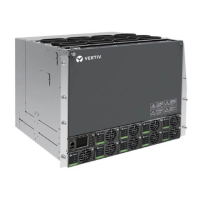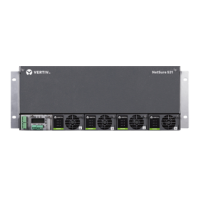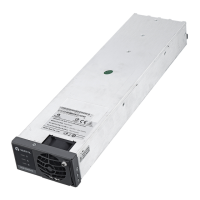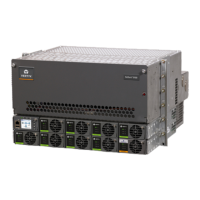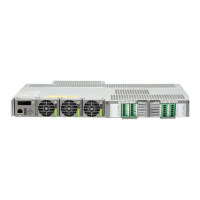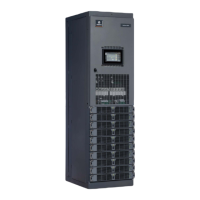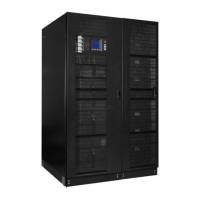Vertiv | NetSure 7100 Series Quick Start Guide (QS582127000) | Rev. T
System Interface Circuit Card
The System Interface Circuit Card provides connections for the following. Refer to Figure 31.
• Battery Tray FA Signal: This input is used to provide a battery tray fuse alarm (FA) on the controller due
to a tripped battery disconnect breaker on a battery tray in the power system rack. Application of
system voltage to pin TB1-1 activates this alarm. The lead should be protected at the source with an in-
line fusible resistor. The source should be originated from the system side of the disconnect device, not
the battery side. If used with List 93 battery tray option this connection is applied in the factory.
• External Battery FA Signal (circuit card installed in Main Bay only): This input is used to provide an
external battery fuse alarm (FA) on the controller due to a tripped battery disconnect device (fuse,
breaker or contactor) external to the power system rack. Application of system voltage to pin TB1-2
activates this alarm. The lead should be protected at the source with an in-line fusible resistor. The
source should be originated from the system side of the disconnect device, not the battery side.
• External System FA Signal (circuit card installed in Main Bay only): This input is used to provide an
external system fuse alarm (FA) on the controller due to a tripped distribution device (fuse or breaker)
on the system output external to the power system distribution cabinet. Application of system voltage
to pin TB1-3 activates this alarm. The lead should be protected at the source with an in-line fusible
resistor. This input is not to be used for any voltage bus (such as converter output) other than the
system bus.
• External Battery Monitoring (circuit card installed in Main Bay only): If the jumper J10 is set to External
(see Figure 8), connect TB1-4 and TB1-5 to the desired battery voltage sensing point. Observe proper
polarity per the Figure 8. The hot sense lead should be protected at the source with an in-line fuse or
fusible resistor.
• RS-485 (used for communication with SM modules)
(Also used when an NCU configuration is furnished that enables NCU capability to receive status
information sent from Fiamm SoNick [Sodium Nickel] batteries. Connect leads from the Fiamm SoNick
batteries to the RS-485 terminals. See Figure 31. Refer to the battery manufacturer documentation and
the NCU controller manual UM1M830BNA for details.)
• RS-232 (used for communication with a DPU)
• Bay Voltage Monitoring Test Points: Provide system bus voltage measurement for an external meter.
The leads are protected against fault with 10kohm series resistors in each lead.
• Bay Load Shunt Monitoring Test Points: Provide for measurement of the system load shunt in the bay.
See below for shunt ratings. The leads are protected against fault with 10kohm series resistors in each
lead.
List 21, 1-Row Distribution Cabinet: 800A / 25mV (32A per mV)
List 22, 2-Row Distribution Cabinet: 2000A / 25mV (80A per mV)
List 23, 3-Row Distribution Cabinet: 2500A / 25mV (100A per mV)
List 24, 4-Row Distribution Cabinet: 2500A / 25mV (100A per mV)
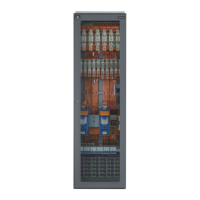
